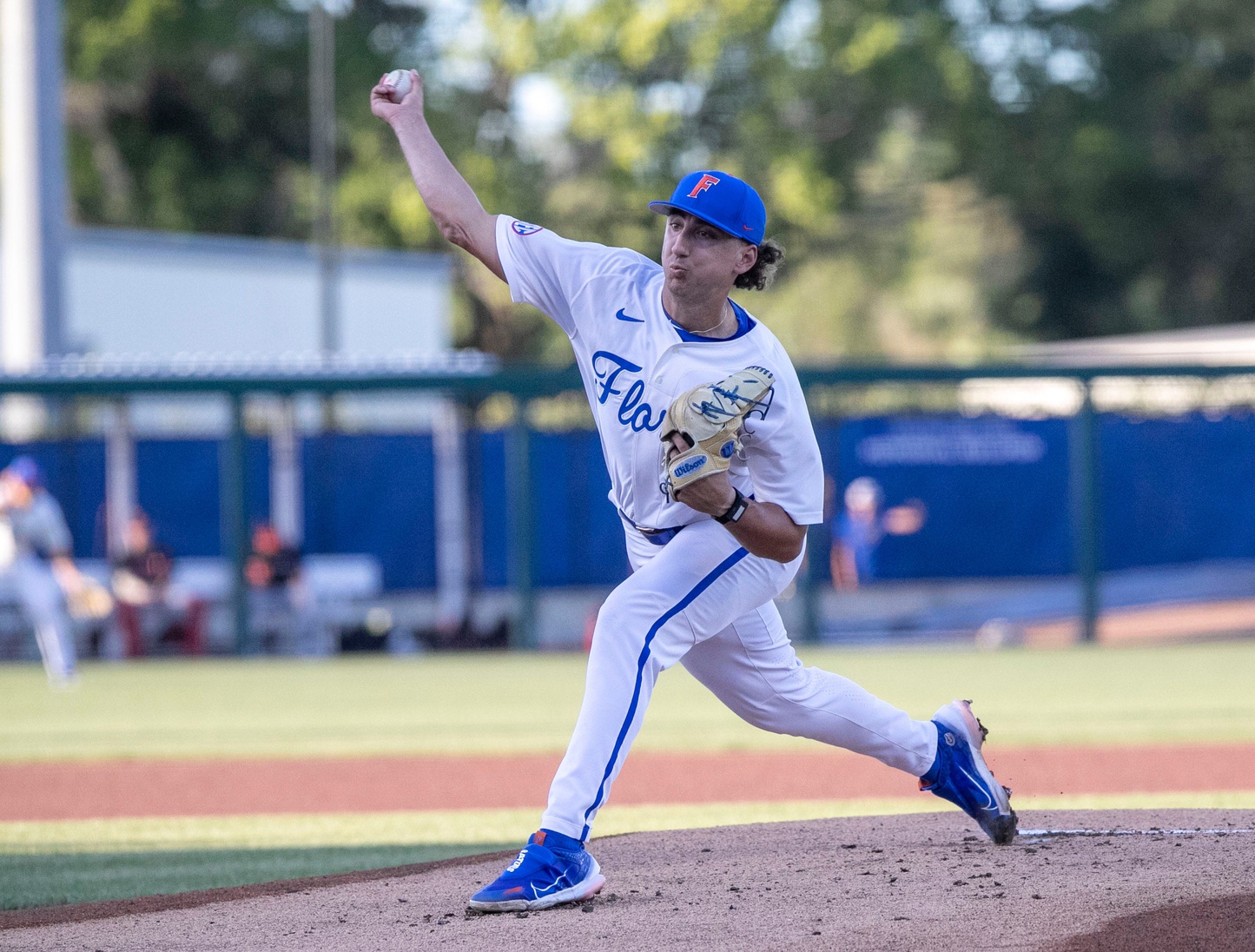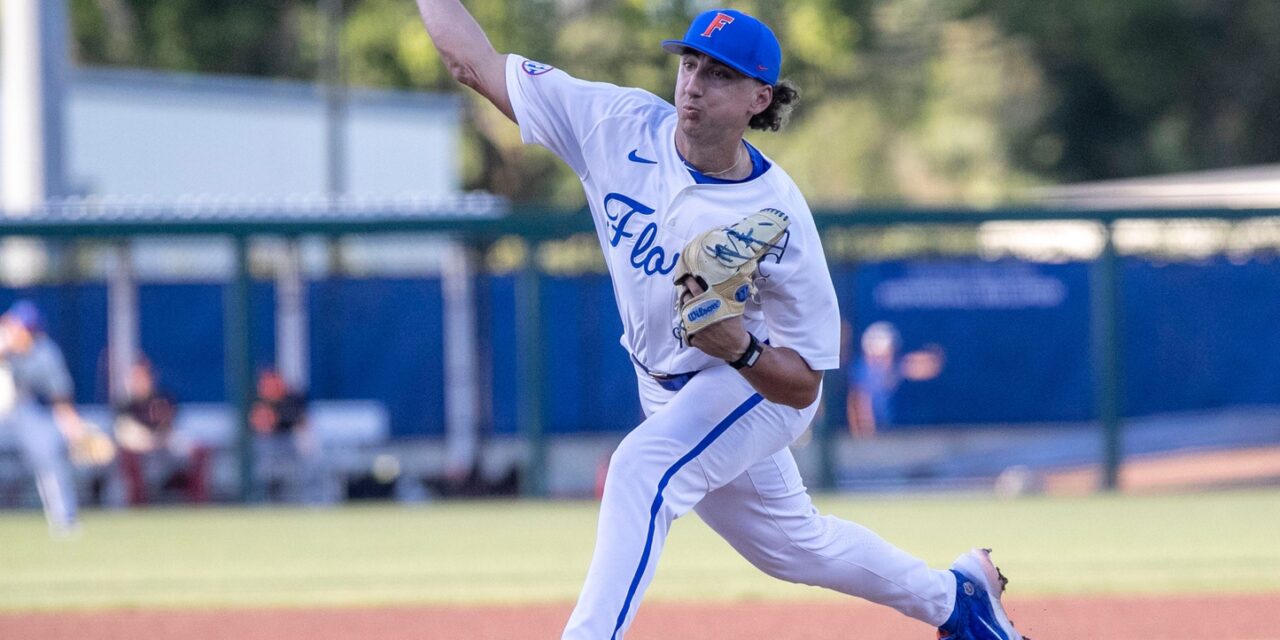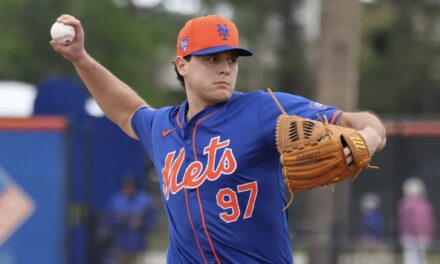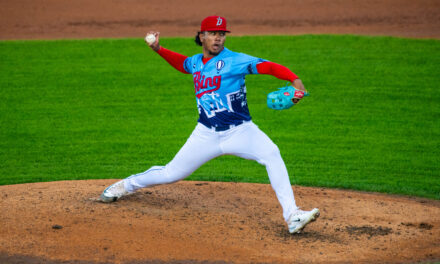When the Mets drafted Brandon Sproat with the 56th overall pick, onlookers immediately knew two things: 1). The Mets knew Sproat was going to sign this time around (nobody would be able to withstand the embarrassment of drafting but not signing him twice) and 2). The Mets really wanted Brandon Sproat in their organization. His stats don’t exactly jump off the page, but he did boast over 11 K/9 in the SEC to go along with his 4.66 ERA. But those numbers don’t tell the whole story. Let’s dive into why the Mets wanted Brandon Sproat so badly …

Brandon Sproat, photo via Cyndi Chambers/ Gainesville Sun
Arsenal Breakdown
Sproat throws four pitches including a four-seam fastball, change up, slider, and curveball.
His fastball is a fireball in the mid-to-high 90’s, getting as high as 101 mph. His slider is a tighter gyro or slutter shape, meaning it lacks the sweeper’s right to left movement and is mostly spinning like a bullet or a football. This type of slider platoons well to both righties and lefties and is his primary offspeed pitch, getting into the low 90’s. While his spin rate (2700+) on the pitch is high, spin rate isn’t overly relevant for gyro type shapes as the spin isn’t directed towards movement. Gyro sliders are usually around 0% spin efficient, meaning that none of the spin is contributing towards induced movement.
Regardless of the spin, his type of slider is particularly beloved by the Dodgers right now, and is an elite weapon at his current velocity. The change up sits in the mid-to-upper 80’s and he has traditionally had good feel for getting it in zone, using it mostly as a ground ball pitch but with devastating results to lefties. His curveball is his fourth pitch and despite the above average velocity on it (hovering around 80), like most curveballs, it is used mostly for called strikes.
Mechanical Breakdown
Sproat has a bit of a herky-jerky lower half and longer arm action. He also tilts a little bit towards third base with his torso which lowers his slot a bit although he doesn’t quite get to sidearm territory–think of the opposite of James Karinchak for a visual or his torso movement.
His arm action being long contributed to his run-heavy shape on his fastball and change up–he gets on the side of the ball better because of this move he makes. Due to his release point, extension, and arm slot, he has both a low release height and a lower hand position at release. Sometimes it’s difficult to decide on a fastball shape for a pitcher with his mechanics, as he could likely throw a good two seam with run due to the lower 3/4 delivery and a good four-seam with a good vertical approach angle (flat angle so hitters swing under the ball) because of the lower release height. He may be a candidate to do both, which is particularly valuable in a starter. For example, the Mariners’ Bryan Woo just added an above average sinker to go along with his elite four seam.
Pro Comparisons
Mechanically, he has some lower half similarities to Giants lefty Alex Cobb, release point similarities to Mariners closer Paul Sewald, and looks like a slightly higher slot, harder throwing version of old Mets farmhand (and current Phillies Triple-A arm) Trey Cobb. A similarity amongst all of these pitchers is that they throw sweeping breaking balls which Sproat could likely learn quickly to compliment his fireball slider, but he might not need it.
Projection and Summary
Sproat is a candidate to be a fast mover through the Mets system as an experienced college arm, and has the pitch mix to be a sustainable starting pitcher. Regardless of where he pitches this year, he will likely start the 2024 minor league season in High-A Brooklyn and compete for a promotion as the best arms from the 2022 draft are doing right now.
While he might make some minor adjustments to his pitch shapes, any changes he makes would be akin to a car that has the horsepower in the engine but gets some minor tune ups. With his fastball reaching triple digits, he might soon challenge Edwin Diaz and Bryce Montes de Oca for fastest heater in the organization.
















